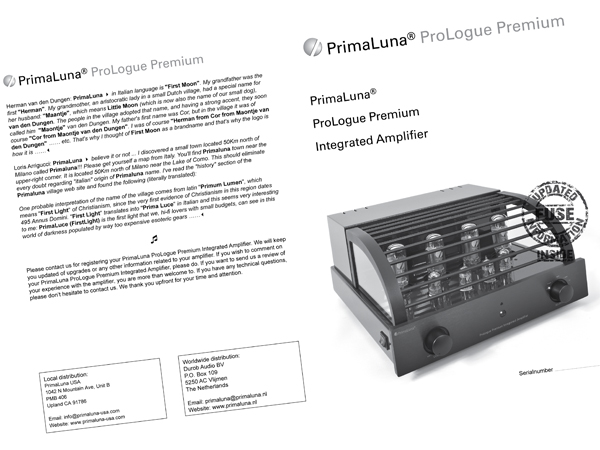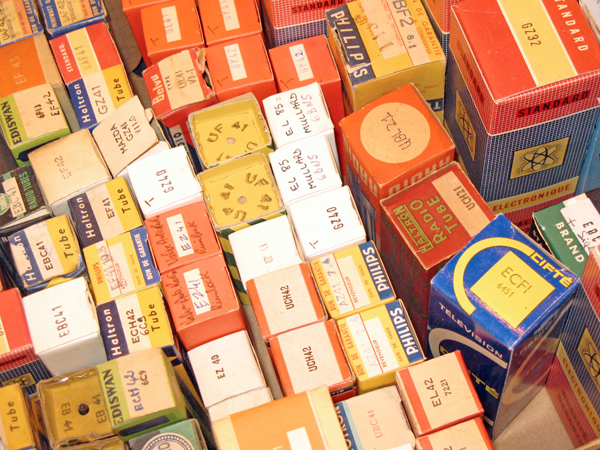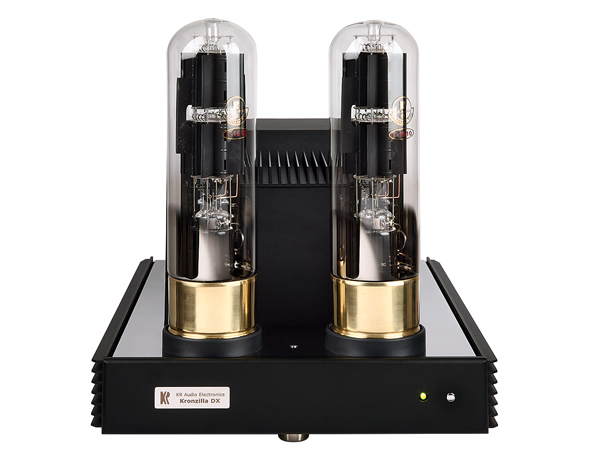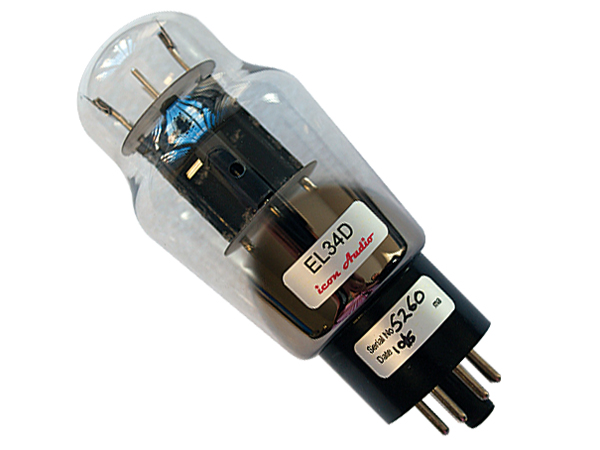Valves: ready to roll? Page 2

On the other hand, PrimaLuna’s range will appeal more strongly to hi-fi hobbyists who’d actually really like to experiment with different tubes, as its Adaptive AutoBias system makes this easier and safer. Though the amplifiers use solid-state rectification, the Adaptive AutoBias system also provides a slow power-up to prolong tube life, and the latest version also includes a Bad Tube Indication circuit, with warning LEDs to light up if a tube draws more current than it should do.
PrimaLuna’s instruction manuals give clear and helpful advice about tube rolling. For the power stages of the Prologue Premium integrated, for example, it’s explained that you can substitute 6CA7, E34LS or E34L power tubes for the EL34s supplied, and that ‘You may also use 6L6GC, 7581A and KT66 though power will drop slightly’. The auto bias system will cater for these variations, but there’s also a bias setting switch to optimise the amp for KT88 valves or 6550s or KT90s.
It’s always good to be cautious when changing power tubes. The best advice is to buy from an established and reputable supplier that really does test and match the tubes it is selling. Classic amps like the Leaks and Quads are basically robust, but in some circumstances, particularly if other parts are beginning to fail, a faulty tube could write off the output transformer by passing too much current through the thin wire of the primary winding.
And comparisons between tubes that aren’t in new condition can be very misleading, as Terry Bateman points out.
‘If the tubes are fresh and new out of the box, brand new stock, they should all be up to the standard, and you are then hearing the difference between the tubes. But sometimes with older stuff, you’re putting a valve in the circuit that can actually be changing the conditions of the circuit, and so what you’re hearing isn’t necessarily the sound of the valve, but the actual change in operating conditions, including distortion and so on.’

Pair matching
Except perhaps with PrimaLuna’s auto system, close pair matching is crucial in a push-pull output stage. Terry Bateman continues: ‘You pull a tube out, put another one in and you go “Oooh, that sounds better!” For argument’s sake, you might find four output valves in a stereo amplifier, so that’s two pairs. You could swap two over and get a slight imbalance in the output stage. That would give you a difference in sound where you’d say the so-and-so valve sounds better than XYZ. But all you’ve done is just introduce some distortion!’
Still on classic British amplifiers, John Howes chose not to use the expected KT66 for his own Howes Acoustics version of the Quad II.
‘People have said to me, “I’m running my Quads with KT88s,” which is ridiculous, because it’s a different animal. It won’t give you any more power, but it’ll draw a lot more heater current so they get hotter. But they don’t believe you when you tell ’em!
‘A good equivalent is the 5881 or 6L6GC, which doesn’t look as meaty as the KT66, but it’s a stronger valve. But note the 6L6G and 6L6GT types have lower voltage ratings than the later 6L6GC version, so if in doubt use the latter tube.
‘With any other valves, including the EL34, you need to use a different bias resistor and also connect two pins together on the base. When I did my modified ones, initially, I went for a rugged STC valve, the 5B/255M, which is like an industrial 807. The 807 can be compared to an uprated 6L6, the Americans used it for transmitters and it had a different 5-pin base and a cap anode. It looks beautiful, but remember that if you take the top cap off, you could put your finger on the HT line, which is not ideal!
‘The 5B/255Ms worked a treat in the Quad, but they looked skinny. And I’ve got to say that your eyes do a lot of the buying, don’t they!
‘So I used the EL34. This is a pentode, but that’s not a problem, because you can use a pentode instead of the KT66 beam tetrode by connecting the suppressor grid to the cathode. They worked so well that everybody that’s got the EL34s will say that’s the way to go. But we all have different ideas...’

Out of reach
For many decades now, the specialist valve amplifier manufacturer Audio Note has been able to draw on its own massive inventory of valuable new old stock tubes. Audio Note UK’s founder and owner Peter Qvortrup says, ‘That’s being maintained, and as we use it, I buy more!’.
Asked for his views on tube rolling, he opened with ‘A small caveat! People really need to be more careful when they yank the tubes in and out, because we get a small stream of equipment back where people have broken circuit boards and damaged valve bases.
‘One of the fundamental problems now is that most of the new old stock, the really good new old stock valves, are becoming so expensive that they are literally out of reach of most people. I’ll give you an example, recently I sold two sets of Gaku-On tubes, which was eight 211s, four VT25s and eight rectifiers, to a customer in Singapore. And he paid £34,000. And I sold a pair of old 1950s engraved-base 300Bs, and I got £4000 each for them!
‘The wealthy audiophiles are perfectly happy to pay this sort of money. But my advice to most normal customers is to buy a better cable, or to upgrade to a better amp. Even basic valves like a Mullard EL34 are £200 each. It’s an area where I tend to say, yes you can make things better. But these improvements are not permanent. If you buy a better cable, that improvement is permanent.
‘Buy a couple of Telefunken ECC83s and put those in your amp and you’re looking at paying 150 or 200 euros apiece. After five or six years they’re worn out, and you’ll have to buy new ones. And then they’ll be probably even more expensive, if you can find them!’
Although sources of genuine NOS tubes are drying up, the modern tube industry seems ready to cater for every whim of the hi-fi tube roller. This includes new valve types as well as the endless variety of tubes that have been revived.
One of the industry’s great movers and shakers is the American Mike Matthews, who recently acquired the old US tube company Tung-Sol. For those who want more power than the traditional KT66 or KT88, or even the later KT90 developed by the Serbian company EI, Tung-Sol brought out the KT120 and finally the even more powerful KT150.

High class glass
More recently, with ultimate sound quality rather than power in mind, Icon Audio has launched its innovative EL34D triode power tube (pictured above).
‘Conceivably, it could drop into any EL34 amplifier that’s out there and it automatically will become a pure triode,’ says David Shaw. ‘Feedback from sales of our amplifiers suggests that, where switchable, eight out of ten users run their amps in pure triode mode rather than ultralinear.’
Meanwhile, in the more exotic sphere of the classic directly-heated triode, Audio Note is about to release a 211 and a 300B that use molybdenum as the plate material, rather than the usual carbon.
If you’re up for either of those, be prepared to take out a second mortgage. On the other hand, if you’ve just acquired a headphone amplifier with a single 6922 tube, you can have some tube fun without spending the earth. Don’t be afraid. You’re ready to roll.

























































